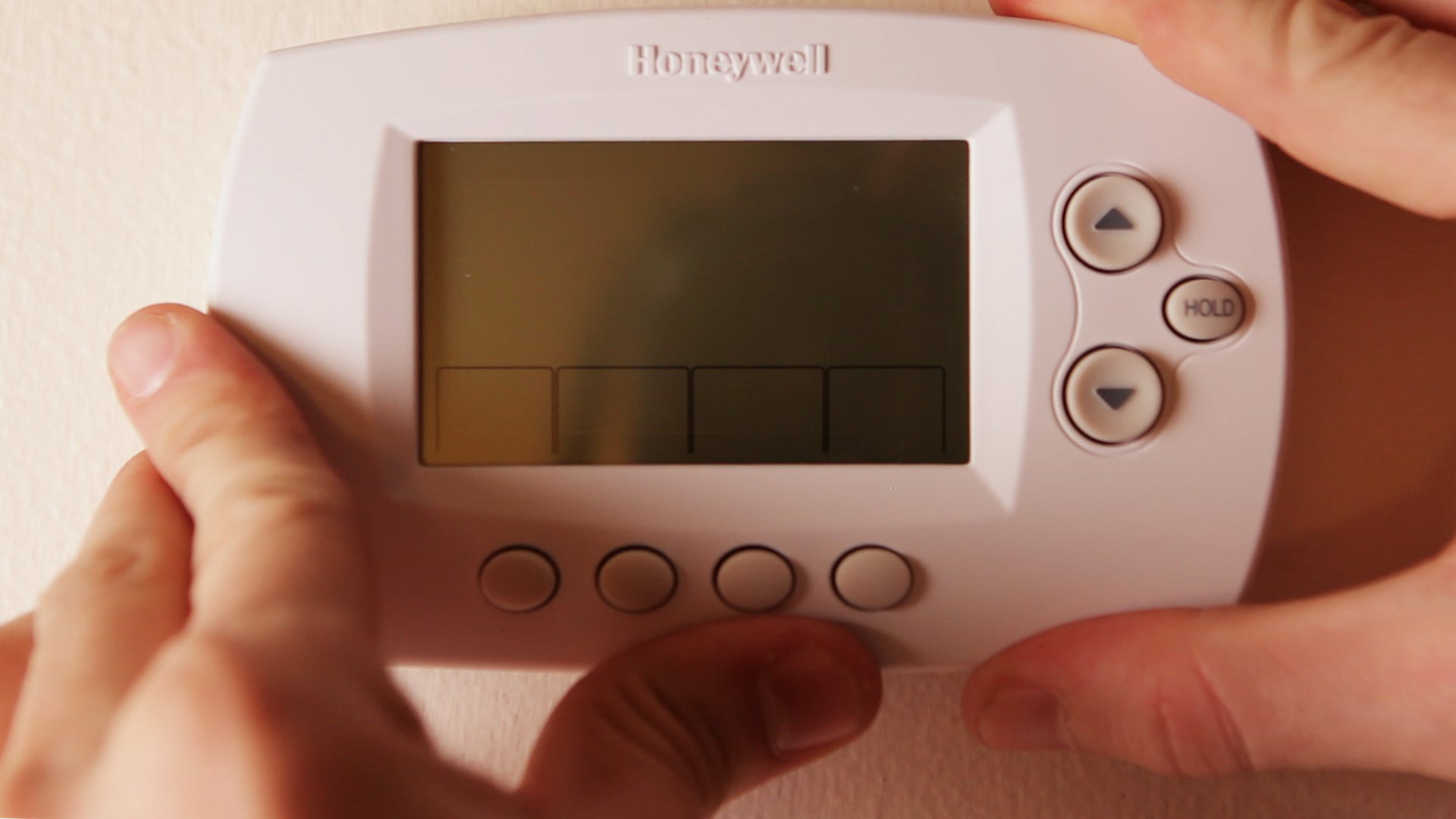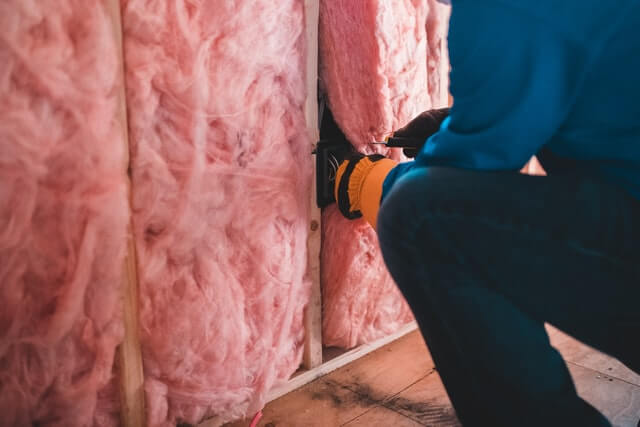Removing your old, analog thermostat and upgrading to a programmable digital thermostat is an easy DIY project. This is an inexpensive project that can make your heating system operate more efficiently and help you save money on your heating bill. A programmable thermostat allows you to set appropriate temperatures based on time of day or day of the week. According to the Department of Energy, turning your thermostat back 10 – 15 degrees for 8 hours (like when you are at work) can help shave off 5% – 15% on your heating bill each year.
Analog thermostats utilize a simplistic knob or lever that you can easily move to adjust your home to the desired temperature. The problem is two-fold. First, there is an inherent inaccuracy of this method when it comes to setting your thermostat to a specific temperature. Second, an analog thermostat needs to be adjusted manually and doesn’t account for the long periods of time you may be out of the house.
Watch our video below to see how easy it is to swap out your old thermostat for a new one, and follow the advice below. If that sounds like too much work, considering hiring a Porch Pro:
Hire a Local HVAC Professional
Supplies Needed
- wire cutters
- screwdriver
- duct tape
- digital thermostat
- an appropriate length of thermostat wire
Step 1: Turn off the power to your heating system
Turn off the power at either the circuit breaker or at a switch near your heating system. When working with electricity and wiring it’s a smart idea to make sure the power is actually off (electricians always treat any wire as if it’s still live before working on it). Test the wires with a voltage tester or simply try turning on the system and verify that it isn’t working.
Step 2: Remove the old thermostat
The faceplate may require a simple pull to remove it from the back plate. Use your screwdriver to detach the back plate from the wall and detach the old wiring. Special note about mercury: your old thermostat may contain mercury, which needs to be disposed of carefully. Do not throw this in your garbage can! Take the old thermostat to a hazardous waste facility or an HVAC company. You can also visit http://www.thermostat-recycle.org/ to locate the nearest facility that accepts mercury.
Step 3: Run the new wire
Tape one end of your new length of wire to the end of the old wire using electrical tape or duct tape. Head to your heater and start pulling the old and new wires from the thermostat location to the heater. Cut the new wire to the appropriate length and discard the old wire.
Step 4: Attach the new wiring
Locate where the wires attach to your heater and detach the old wiring. Using the wire cutter, strip the ends of the new wires (that means, score and cut off the plastic coating to expose the metal wires). You’ll need to attach the new wires to the correct color coding. Not all systems are the same so it’s best to check with your manufacturer’s guide. Confused at this step? You may want to call an electrician or an HVAC professional.
Step 5: Attach new thermostat
Attach the new backplate to the wall, taking care to leave the new wiring in the correct location. To attach the wires you’ll want to strip off the plastic coating and separate the wires. Attach them to the new thermostat according to the manufacturer’s instructions. Place the new thermostat cover over the backplate.
Step 6: Turn back on the power and test
Turn on the power to the heating system and head over to your thermostat. You’ll need to read the instructions carefully and set the new temperature. Most models will allow you to set multiple temperatures by time of day or night. And most models also allow for a vacation or weekend mode. As the seasonal weather changes, you’ll want to adjust your thermostat settings.
How programmable thermostats save you money
Programmable digital thermostats are designed to gradually raise the temperature of your home just prior to when you want the home to hit that temperature. This efficiency in raising the temperature also makes for efficiencies in your heating bill. Keeping your home a comfortable temperature is important, but there’s no reason to keep the heat on while you’re away during the day. Most models make it easy to set a different schedule for every day or have a weekday versus weekend schedule. And of course, all of the settings can be quickly readjusted if the temperatures drop or your schedule changes.
Working with an HVAC professional
Your heating, ventilation and air conditioning (HVAC) professional is a great source of information about your thermostat as well as your home’s energy usage. Some companies offer free energy consultations or inspections so they can do a quick audit of your ventilation system and note any issues or problems that may be contributing to a higher-than-necessary energy bill. They are also the best person to inspect, tune and maintain your furnace or air conditioning systems; these should be maintained annually. Most HVAC professionals want to have a long-term relationship with their customers, so ask them about service plans or loyalty discounts. Find a local HVAC professional here.
Should I install a smart thermostat?
Although the actual bells and whistles may differ from model to model, the basic idea of a smart thermostat is that it can be programmed remotely (like from your smartphone) and give you a better understanding of your energy usage. Some models learn your temperature behavior and can make modifications and adjustments even before you do. Some smart thermostats encourage behavior modification by reminding the user when they are saving money, or reminding them to adjust the temperature. And many models offer internet connectivity so that you can see a daily report on your heating or cooling usage.
Some smart thermostats offer a more contemporary design, aimed at a better user experience. Smart thermostats are generally more expensive than standard programmable thermostats and may require internet capabilities. Whether or not a smart thermostat is more efficient than a regular programmable thermostat may depend upon the model you install. But rest assured, any type of programmable thermostat is more efficient than an older analog model.




